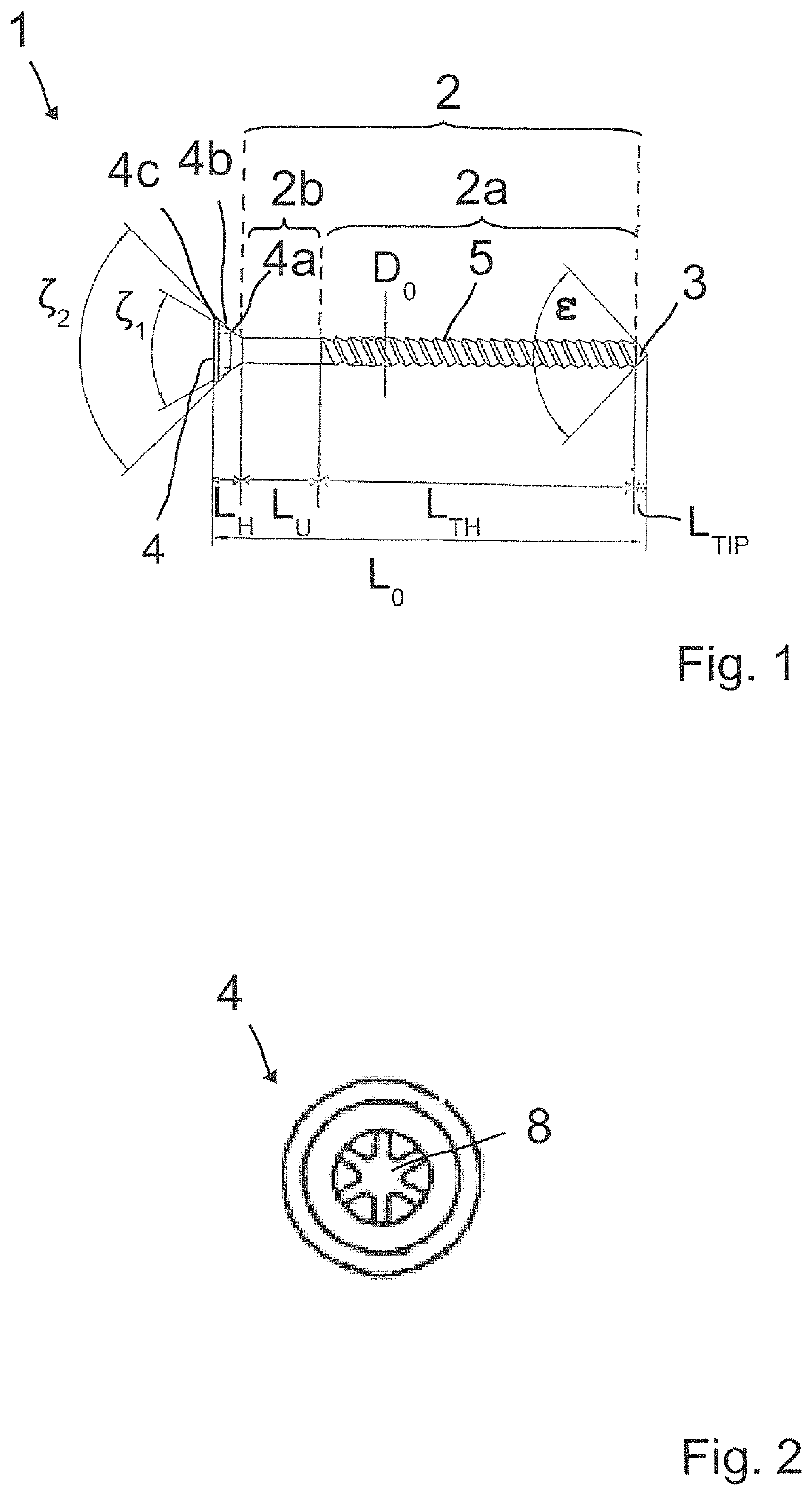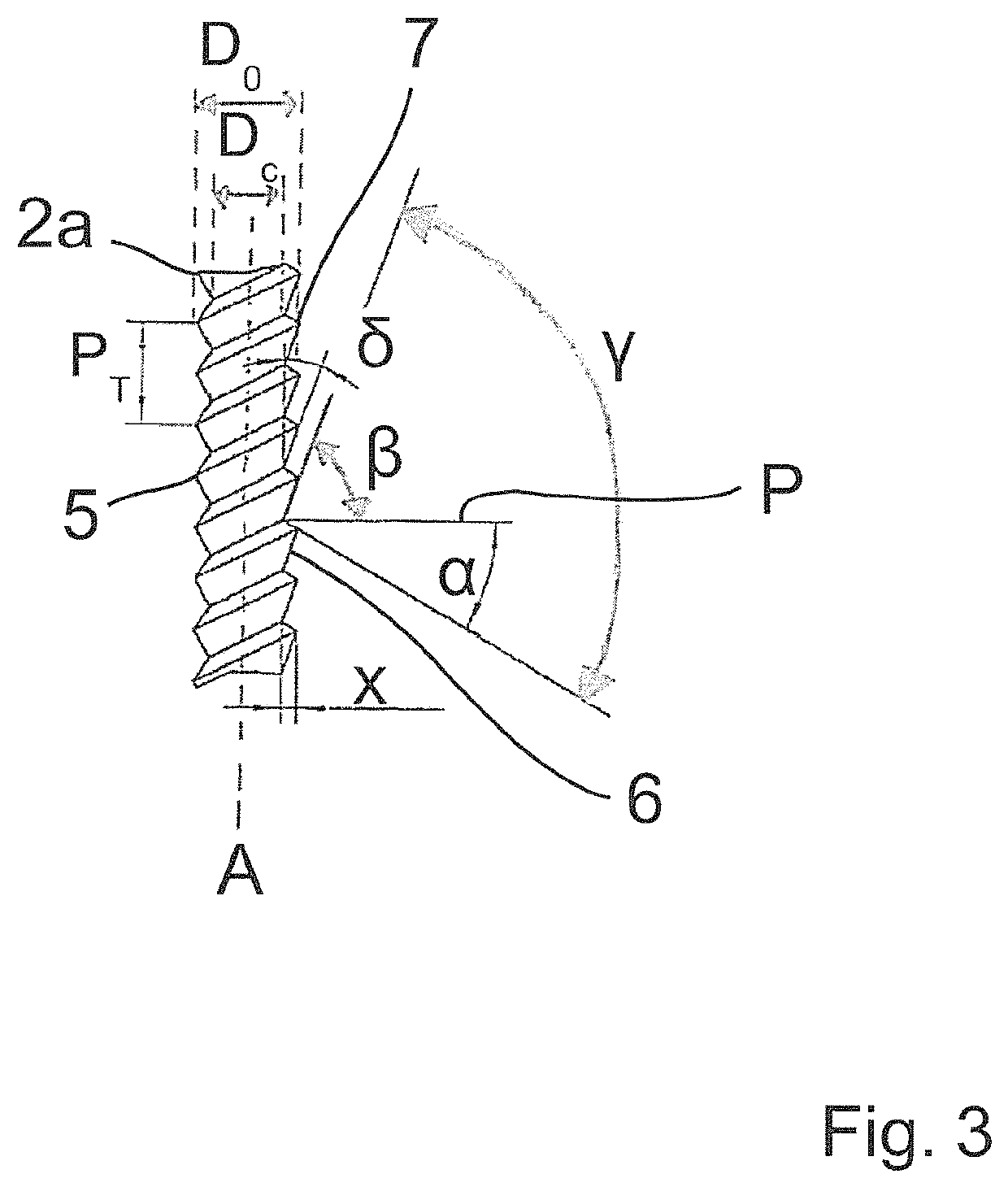Nail screw
a nail screw and screw head technology, applied in the field of nail screws, can solve the problems of undesired wood split, and achieve the effect of simple unscrewing of the nail screw
- Summary
- Abstract
- Description
- Claims
- Application Information
AI Technical Summary
Benefits of technology
Problems solved by technology
Method used
Image
Examples
Embodiment Construction
)
[0020]FIGS. 1 to 3 show a nail screw 1 for connecting facade boards or terrace planks made of real wood according to the invention. Nail screw 1 has a shaft 2, a conical tip 3 formed at the front end region of the shaft 2 and a head 4 formed at the rear end region of the shaft 2. A double thread 5 having a forward facing insertion flank 6 and a rearward facing grip flank 7 is provided on the shaft 2 between the conical tip 3 and the head 4. More precisely, the shaft 2 consists of a threaded shaft portion 2a which has the thread 5 and directly adjoins to the conical tip 3 and an unthreaded shaft portion 2b which is formed between the threaded shaft portion 2a and the head 4.
[0021]A grip flank angle α measured between the grip flank 7 and a plane P perpendicular to the longitudinal axis A of the nail screw 1 is 30 degrees in the present case. Furthermore, an insertion flank angle β measured between the insertion flank 6 and the plane P is 70 degrees in the present case. A resulting t...
PUM
| Property | Measurement | Unit |
|---|---|---|
| flank angle | aaaaa | aaaaa |
| flank angle | aaaaa | aaaaa |
| tip angle | aaaaa | aaaaa |
Abstract
Description
Claims
Application Information
 Login to View More
Login to View More - R&D
- Intellectual Property
- Life Sciences
- Materials
- Tech Scout
- Unparalleled Data Quality
- Higher Quality Content
- 60% Fewer Hallucinations
Browse by: Latest US Patents, China's latest patents, Technical Efficacy Thesaurus, Application Domain, Technology Topic, Popular Technical Reports.
© 2025 PatSnap. All rights reserved.Legal|Privacy policy|Modern Slavery Act Transparency Statement|Sitemap|About US| Contact US: help@patsnap.com


